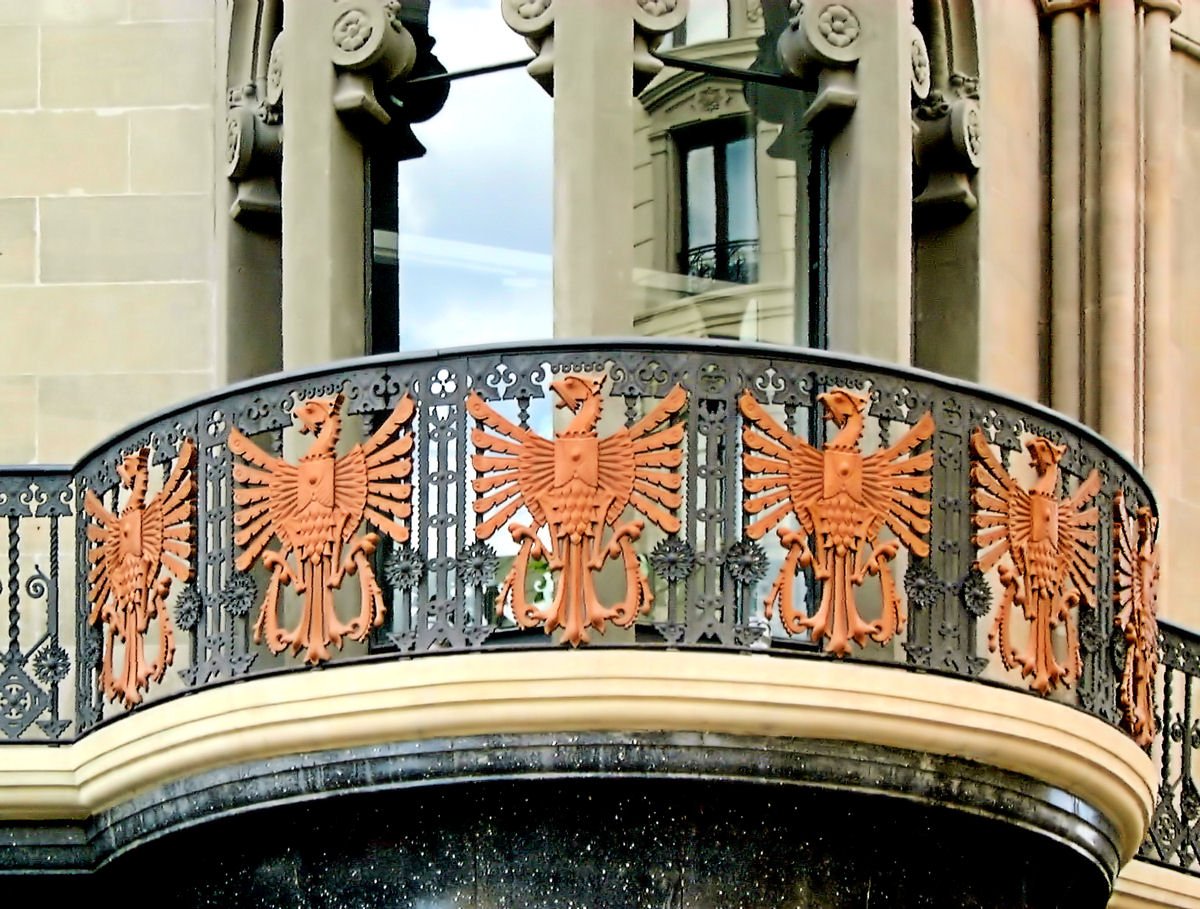#1702. Imperial Symbolism on the Façade: Wrought Iron Balcony Railings with Heraldic Motifs
The photograph showcases an impressive fragment of architectural façade, specifically an ornate metal balcony railing of a historic building. The central element of the composition is an elegant wrought iron balustrade featuring expressive heraldic symbols in the form of terracotta-colored double-headed eagles, which effectively contrast with the dark metal base. The eagles with outstretched wings create a rhythmic pattern along the entire length of the railing, lending grandeur to the façade and referencing imperial symbolism.
The architectural solution of the balcony demonstrates meticulous attention to detail: the delicate metalwork with floral elements and geometric shapes forms an exquisite background for the main heraldic motif. The balcony has an elegant semi-circular shape, emphasizing the plasticity of the façade and creating a smooth transition between the architectural volumes of the building.
In the upper part of the image, elements of a classical façade with Ionic volutes are visible, suggesting that the building was designed in a neoclassical or eclectic style. The combination of a monumental base with detailed balustrade decoration creates a complex, multi-layered architectural composition characteristic of representative urban structures from the late 19th to early 20th century.
When designing a façade for a private home, elements of such decoration can be adapted on a more modest scale: wrought iron balcony railings with geometric or natural motifs, decorative metal inserts in contrasting colors, or the use of heraldic symbols as accent elements. However, it's important to maintain a sense of proportion and stylistic unity throughout the exterior, avoiding an overload of decorative elements.
